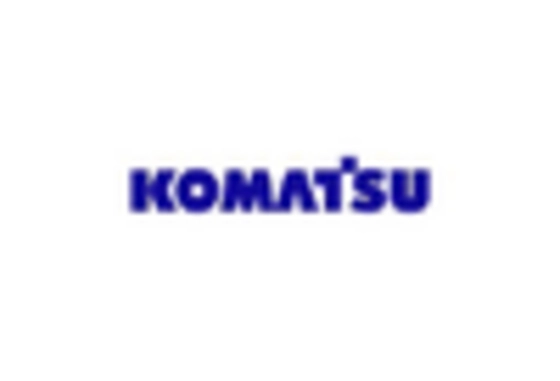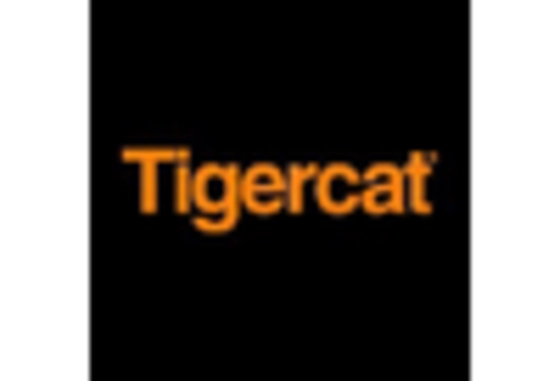Increased Demand for Timber
The rising demand for timber, driven by construction and furniture industries, appears to be a primary driver for the Forestry Equipment Market. As urbanization accelerates, the need for sustainable building materials intensifies. In 2025, the timber market is projected to reach a valuation of approximately 600 billion USD, indicating a robust growth trajectory. This surge in demand necessitates advanced forestry equipment to ensure efficient harvesting and processing. Consequently, manufacturers are likely to innovate and enhance their product offerings to meet the evolving needs of timber producers. The interplay between timber demand and forestry equipment capabilities suggests a symbiotic relationship that could bolster market growth.
Expansion of Forestry in Emerging Markets
The expansion of forestry activities in emerging markets is likely to serve as a catalyst for the Forestry Equipment Market. Countries with abundant forest resources are increasingly investing in their forestry sectors to boost economic growth and create jobs. This trend is particularly evident in regions where deforestation has been a concern, leading to initiatives aimed at sustainable forest management. As these markets develop, the demand for modern forestry equipment is expected to rise, potentially increasing market size by 20% by 2027. This expansion presents opportunities for equipment manufacturers to penetrate new markets and diversify their customer base.
Growing Awareness of Environmental Impact
There is a growing awareness regarding the environmental impact of forestry practices, which is influencing the Forestry Equipment Market. Stakeholders, including consumers and businesses, are increasingly prioritizing eco-friendly practices. This shift in consumer behavior is prompting equipment manufacturers to develop products that minimize ecological footprints. In 2025, the market for environmentally friendly forestry equipment is projected to grow by approximately 15%, reflecting a significant trend towards sustainability. This awareness not only drives demand for innovative equipment but also encourages companies to adopt practices that align with environmental conservation efforts.
Regulatory Support for Sustainable Practices
Regulatory frameworks promoting sustainable forestry practices are likely to influence the Forestry Equipment Market positively. Governments are increasingly implementing policies that encourage responsible forest management and reforestation efforts. For instance, initiatives aimed at reducing carbon footprints and enhancing biodiversity may lead to increased investments in advanced forestry equipment. In 2025, it is anticipated that the market for sustainable forestry practices will expand significantly, potentially reaching a value of 200 billion USD. This regulatory support not only fosters environmental stewardship but also drives demand for innovative equipment designed to comply with sustainability standards.
Technological Integration in Forestry Operations
The integration of advanced technologies such as automation, IoT, and data analytics is transforming the Forestry Equipment Market. These technologies enhance operational efficiency, reduce labor costs, and improve safety in forestry operations. For example, the adoption of precision forestry techniques allows for more accurate resource management, which is expected to increase productivity by up to 30% in the coming years. As technology continues to evolve, equipment manufacturers are likely to invest in research and development to create smarter, more efficient machinery. This trend indicates a shift towards a more technologically driven forestry sector, which could reshape market dynamics.


















Leave a Comment